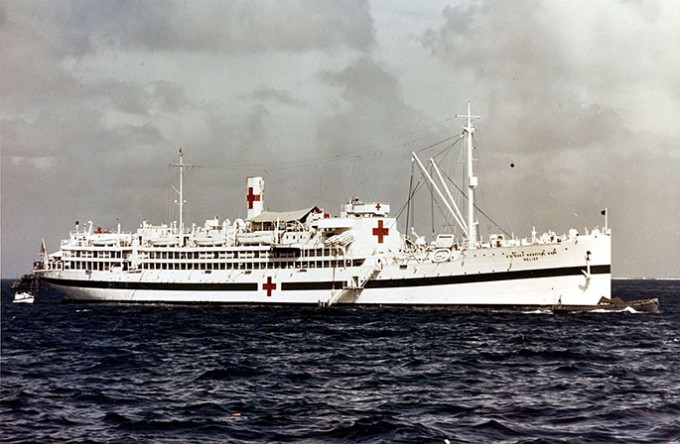Feature
Nursing Aboard Hospital Ship USS Relief, 1917-1946
Attacking a hospital ship was a war crime, but in 1945, the USS COMFORT was hit by a Japanese kamikaze pilot

Although she was the sixth ship to be called Relief, she was the first U.S. naval vessel ever specifically designed as a fully equipped, modern, seagoing hospital.
She was almost as big as a hospital building: Stretching almost 484 feet from bow to stern, she was longer than a city block and displaced more than 9,800 tons laden, making her roughly the size of a contemporary cruiser. Her nominal bed capacity was 500, but patient headcount was sometimes hundreds more.
The role of Navy hospital ships like Relief was to bring state-of-the-art healthcare within reach of sick and badly wounded soldiers, sailors and marines throughout the world. During wartime, these ships received casualties directly from the battlefield as well as supporting frontline medical teams. At times, Relief and her sisters carried entire field hospitals.
Around the World Travel
The keel for the ship known in the Navy register as Hospital Ship 1 (AH-1) was laid down at the Philadelphia Naval Yard in June 1917. She was launched in December 1919 and was officially commissioned as USS Relief a year later.
In peacetime, she was painted gray, but in February 1943, her hull was repainted white with a large green horizontal sash and large red crosses on her superstructure, decks and smokestacks to identify her as a hospital ship, as required by the 1907 Hague Convention.
Originally assigned to the Atlantic Fleet, Relief was also active in the Pacific, stopping in Australia, New Zealand, Hawaii and the Samoan Islands. She participated in naval maneuvers and served as an outside medical consultancy on both sea and shore. She also acted as a floating dispensary and clinic for other, non-medical ships and provided U.S. military personnel with access to dental care and other specialty services like radiology and ear, nose and throat treatment.
During peacetime, a ship like Relief was an attractive assignment for nurses, offering an opportunity to travel and see the world. However, even in times of peace, Relief was no cruise ship. In a letter home in March 1923, one anonymous nurse described the ongoing cacophony of bells, whistles and mechanical noises. “Does that sound as if one could ever sleep?” she wrote.
The nurse added that while underway, constant work was punctuated by periodic “abandon ship” and fire drills — not to mention the occasional shout of “Man overboard,” which wasn’t always a drill! Navy nurses also had to learn a new vocabulary, including the ability to distinguish, as one nurse put it, “starboard from port, fore from aft, abeam from abaft [and] a boat from a ship.”
Twelve Navy nurses were assigned to the ship at any given time. Each headed a department like surgery, isolation or burns. The nurses were treated as commissioned officers, each starting with the “relative rank” of ensign. They supervised a staff of enlisted corpsmen, some of whom the nurses trained to serve as medics for landing forces. Nurses also served in a Red Cross role, helping the sick and wounded with more personal issues.



